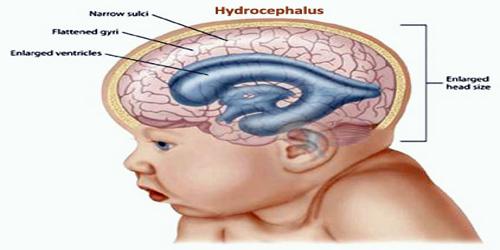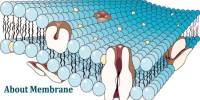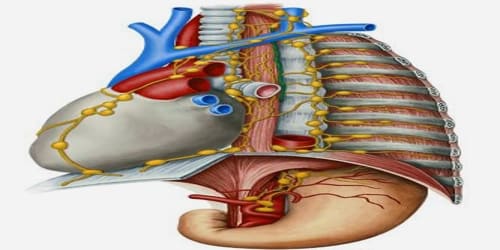Hydrocephalus
Definition
Hydrocephalus is a usually congenital condition in which an abnormal accumulation of cerebrospinal fluid in the cerebral ventricles causes enlargement of the skull and compression of and injury to brain tissue. If hydrocephalus becomes progressive, a shunt is surgically placed to reduce pressure by conducting fluid away from the brain, usually to the peritoneum. Hydrocephalus is sometime called “water on the brain.” The word “hydrocephalus” in Greek literally means “watery head.”

Hydrocephalus mainly occurs in children and adults over 60, but younger adults can get it too. The National Institute of Neurological Disorders and Stroke (NINDS) estimate that 1 to 2 of every 1,000 babies are born with hydrocephalus.
Hydrocephalus can arise before birth or any time afterward. It may be due to many causes including a birth defect, hemorrhage into the brain, infection, meningitis, tumor, or head injury. Most forms of hydrocephalus are the result of obstructed CSF flow in the ventricular system. With birth defects, physical obstruction of CSF flow in the ventricular system is usually the cause of the hydrocephalus. Hydrocephalus is a common companion of spina bifida (meningomyelocele).
There are four types of hydrocephalus: communicating, non-communicating, ex-vacuo, and normal pressure. Diagnosis is typically made by examination and medical imaging. Hydrocephalus is typically treated by the surgical placement of a shunt system. Without treatment, death may occur.

Causes, Sign and Symptoms of Hydrocephalus
Hydrocephalus occurs when too much fluid builds up in the brain; specifically, excess CSF (cerebrospinal fluid) accumulates in the cavities (ventricles) of the brain.
There are more than 100 possible causes of hydrocephalus, but the underlying reasons are:
- Too much CSF is produced.
- One of the ventricles in the brain is blocked or narrowed, stopping or restricting the flow of CSF, so that it cannot leave the brain.
- CSF cannot filter into the bloodstream.
The clinical presentation of hydrocephalus varies with chronicity. Acute dilatation of the ventricular system is more likely to manifest with the nonspecific signs and symptoms of increased intracranial pressure. Symptoms of increased intracranial pressure may include headaches, vomiting, nausea, papilledema, sleepiness or coma. Elevated intracranial pressure may result in uncal or tonsillar herniation, with resulting life-threatening brain stem compression. Early symptoms may also include:

- Eyes that appear to gaze downward;
- Irritability;
- Seizures;
- Separated sutures;
- Sleepiness;
- Vomiting
Symptoms that may occur in older children can include:
- Brief, shrill, high-pitched cry;
- Changes in personality, memory, or the ability to reason or think;
- Changes in facial appearance and eye spacing;
- Crossed eyes or uncontrolled eye movements;
- Difficulty feeding;
- Excessive sleepiness;
- Headache;
- Irritability, poor temper control;
- Loss of bladder control (urinary incontinence);
- Loss of coordination and trouble walking;
- Muscle spasticity (spasm);
- Slow growth (child 0–5 years);
- Slow or restricted movement;
- Vomiting
Diagnosis and Treatments of Hydrocephalus
A routine prenatal ultrasound scan may detect hydrocephalus during pregnancy in the developing fetus. After birth, the head of the baby is measured regularly. Any abnormalities in head size will probably lead to further diagnostic tests.

Treatment of hydrocephalus involves the insertion of a shunt to let the excess fluid exit and relieve the pressure on the brain. The shunt is a flexible, plastic tube with a oneway valve. The shunt is inserted into the ventricular system of the brain to divert the flow of CSF into another area of the body, where the CSF can drain and be absorbed into the bloodstream.
The prognosis (outlook) with hydrocephalus depends the cause and the timing of the diagnosis and treatment. Many children treated for hydrocephalus are able to lead normal lives with few, if any, limitations. In some cases, cognitive impairments in language and non-language functions may occur. Problems with shunts such as infection or malfunction require revision of the shunt.
Reference:
















